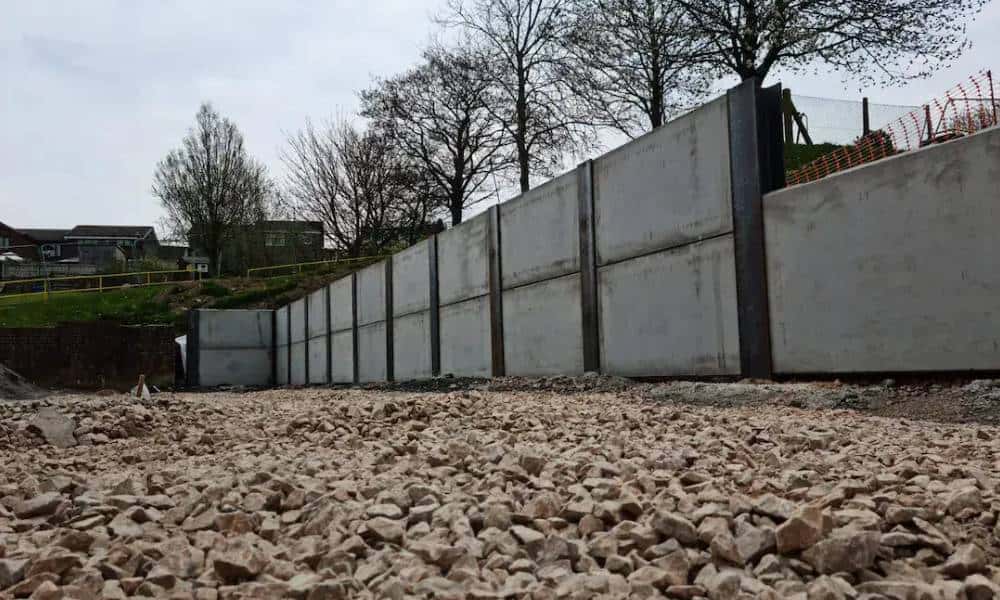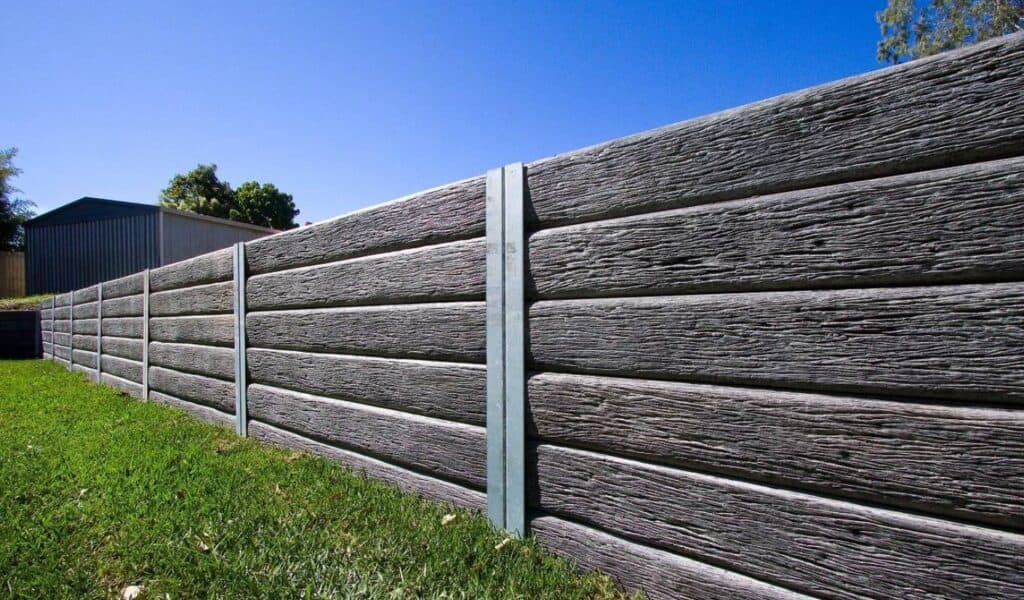Table of Contents
ToggleWhat is King Post Walls?
A king post wall is a permanent or temporary retention system built using steel columns and concrete panels. The king posts are installed at the line of the retained wall with a distance between 1 and 3 meters. Various materials are used to fill the space between posts, particularly precast concrete panels.Parts of King Post Walls
King post walls are mainly constructed of two parts:King Posts
The king posts are usually constructed of steel, which is galvanised to prevent rust or corrosion. Galvanisation offers the modern king wall a lifespan of 45-60 years. Moreover, you can also paint the posts above the ground to avoid corrosion. It’s recommended to use resin-based paints to give longer life to king post walls.King Post Infill Panels
The infill panels for king walls must be strong to resist bending and hold the load. Usually, they are made of concrete or timber, but the most commonly used infill panels are precast concrete panels. They are reinforced with steel columns to provide maximum structural durability and stability. The panel sizes vary from 1-3m in length, 1-1.5 m in height, and 100-250mm (100mm, 150mm, 200mm, 250mm) in thickness. The changes depend on the design and height of the king post wall.Other Infill Panel Types
- Architectural Precast: It adds architectural and aesthetic value to the property.
- Timber: Recycled wood or new wood can be used as infill panels.
- Cladding: Infill panels can be furnished from a variety of materials, such as plastic, brick, stone, and coloured glass.
Common Uses of King Post Walls
- Can be used in many different retention applications.
- Used for the acoustic fence, basement and embankment retention.
- Suitable in various types of terrains, including hard rock.
- Can be used as bearing piles for supporting different steel frame superstructures.
Benefits of King Post Walls
- King post walls have quick and easy installation as they are precast.
- They are cost-effective; cheaper than other retaining walls, such as concrete and sheet-piled walls.
- The installation is relatively silent and vibration free.
- Recycled materials can be utilised as infill material.
- They are best for temporary and permanent retention.
- Their construction is easy and quick, even when setting them against various structures.
- King post walls are environmentally friendly alternatives for sheet piled walls, as they use less steel.
- They are equally effective as your property’s exterior walls.
- They can be installed at different heights to accommodate uneven ground and varying land conditions.
- They can be disassembled easily when needed.
King Post Walls Installation
Installation of king post walls is quick and simple. It involves the following steps:- Use a continuous flight auger (CFA) to bore a vertical hole.
- Fill the hole with wet concrete and then insert the metal columns in the hole.
- Keep holding the column in the vertical position until the concrete hardens.
- Once the steel column has been set, install the infill panels between the two columns.

Frequently Asked Questions (FAQs)
King post walls can be constructed from multiple materials, such as concrete panels, wood, stones, or bricks. But it is best to use concrete panels as they provide more structural stability and durability.
The depth of the posts should be roughly the same as the height of the retaining walls. The post hole should have a minimum of 100mm cement cover below the steel column, and it should have a diameter of 450mm.
Landscape timber wall likely has the most effortless DIY installation as it requires minimum materials, which include a few spikes and timbers.
Poured concrete is the most durable and robust material for a king post wall. It can be transformed into different forms: stained, carved, stamped, or veneered.
There are some disadvantages of king post walls that should be considered:
- Limited lifespan
- Style limitation
- Unsuitable for the region that is prone to earthquakes or high winds
- May need additional support
Last Words
King post walls have been used for years because of their countless benefits. They are durable, strong, and have excellent stability, making them ideal for applications with cardinal durability and strength. A king post wall is the best option if you are looking for an effective way to support a structure or retain soil.



